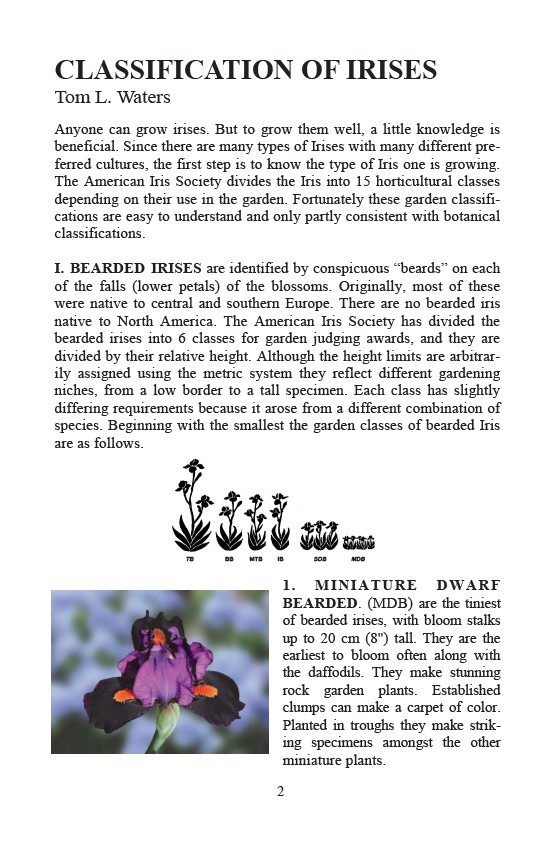
CLASSIFICATION OF IRISES
Tom L. Waters
Anyone can grow irises. But to grow them well, a little knowledge is
beneficial. Since there are many types of Irises with many different pre-ferred
cultures, the first step is to know the type of Iris one is growing.
The American Iris Society divides the Iris into 15 horticultural classes
depending on their use in the garden. Fortunately these garden classifi-cations
are easy to understand and only partly consistent with botanical
classifications.
I. BEARDED IRISES are identified by conspicuous “beards” on each
of the falls (lower petals) of the blossoms. Originally, most of these
were native to central and southern Europe. There are no bearded iris
native to North America. The American Iris Society has divided the
bearded irises into 6 classes for garden judging awards, and they are
divided by their relative height. Although the height limits are arbitrar-ily
assigned using the metric system they reflect different gardening
niches, from a low border to a tall specimen. Each class has slightly
differing requirements because it arose from a different combination of
species. Beginning with the smallest the garden classes of bearded Iris
are as follows.
TB BB MTB IB SDB MDB
1. MINIATURE DWARF
BEARDED. (MDB) are the tiniest
of bearded irises, with bloom stalks
up to 20 cm (8") tall. They are the
earliest to bloom often along with
the daffodils. They make stunning
rock garden plants. Established
clumps can make a carpet of color.
Planted in troughs they make strik-ing
2
specimens amongst the other
miniature plants.